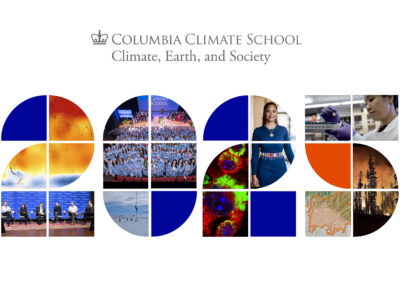
By Alessandra Giannini
Over the last decade many countries in the Sahel region — the semi-arid southern edge of the Sahara that stretches from Senegal to Ethiopia — have been embroiled in conflict. Populations in these countries are growing. This means that resources are increasingly scarce, and a highly variable climate is making agriculture-based livelihoods more uncertain.
These events in the region have been linked to climate change.
Over the last 100 years there have been major swings in the region’s climate. Abundant rains in the 1950s and 1960s were followed by persistent drought in the 1970s and 1980s. The period since the mid-1990s is characterized by the alternation of good and bad years.
My latest research attributes this evolution to emissions from fossil fuel burning. We show that the most recent generation of global climate models account for the Sahel’s persistent drought when information about emissions of pollutants and greenhouse gases is included. And that these models can do that. This is because they simulate changes in ocean temperatures and in regional rain consistently with what’s observed in the real world.
This is the first time that the 20th century evolution of rainfall over a region is shown to have been directly affected by human emissions — specifically pollutants and greenhouse gases. It’s also the first time that a single argument is proposed that consistently explains natural fluctuations and anthropogenic change. This argument rests on the influence of the oceans on regional climate.
Drying Sahel
The Sahel gets its rain from moisture that is carried by monsoon winds from the North Atlantic Ocean.
As air rises, it cools and condenses the moisture that falls back as rain. The warmer the North Atlantic Ocean, the greater the moisture that evaporates from its surface and is carried onto land, the wetter the Sahel.
But whether air can rise locally depends on where else air is rising globally. For example, during an El Niño event, air rises over a much warmer tropical Pacific, and, sinking elsewhere, produces widespread drought. During the second half of the 20th century greenhouse gases warmed the tropical oceans, making conditions for air to rise elsewhere similarly unfavorable.
At the same time the amounts of fine solid particles — known as sulfate aerosols — that were emitted by coal-fired plants increased, as countries rebuilt their economies after World War II. These cooled the North Atlantic directly, by reflecting incoming solar radiation, as well as indirectly, by favoring the formation of clouds which in turn reflect incoming radiation.
Our analysis of an ensemble of 29 global climate models shows that the unique combination of the warming of tropical oceans — caused by greenhouse gases — and cooling of the North Atlantic Ocean — caused by sulfate aerosols — that characterized the second half of the 20th century led to the drying of the Sahel.
Our analysis also shows that despite the role of greenhouse gases in past drought, drought is not necessarily the future of climate change in the Sahel. Now that sulfate aerosol emissions have been drastically reduced around the North Atlantic, thanks to environmental legislation aimed at reducing acid rain and the public health consequences of pollution, warming has picked up in the North Atlantic Ocean.
Therefore, projections for wetter conditions under warming are in line with the explanation given above: air can now rise over the Sahel, fueled by the increased moisture imported from a warming North Atlantic Ocean, in a challenge to the sinking motion imposed by warming tropical oceans elsewhere. Projections are also in line with emerging trends in observations toward a more vigorous water cycle: the more intense, though perhaps less frequent, rainfall events that have led to recurrent episodes of flooding over the past decade.
Future policies
Attribution of Sahel drought to emissions demonstrates that climate change is real, and is already here. Technologies to adapt to drought and more generally to climate variability do exist. They include seasonal climate prediction and land management practices like agro-forestry, conservation agriculture, and soil and water conservation, which already play a role in resilience building.
However, given the societal pressures mentioned at the outset, to develop the Sahel needs to diversify economies away from agriculture. This needs a lot more energy than is produced in the Sahel at present. Within the global context of climate change policy it is mitigation that opens up the opportunity to develop sustainably, with support for an energy transition toward renewable energy particularly appealing in a region endowed by an abundance of sun and wind.
Alessandra Giannini is senior research scientist at the International Research Institute for Climate and Society.
This article is republished from The Conversation under a Creative Commons license. Read the original article.
![]()



